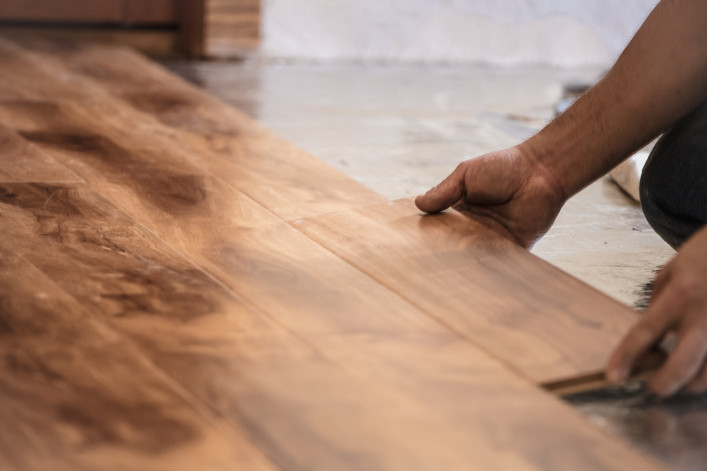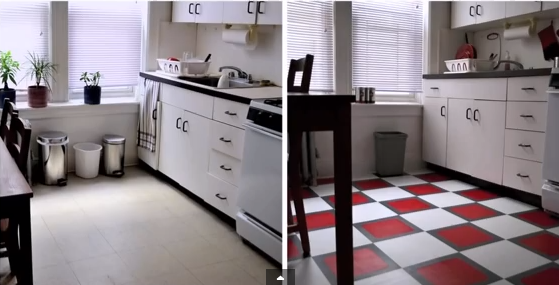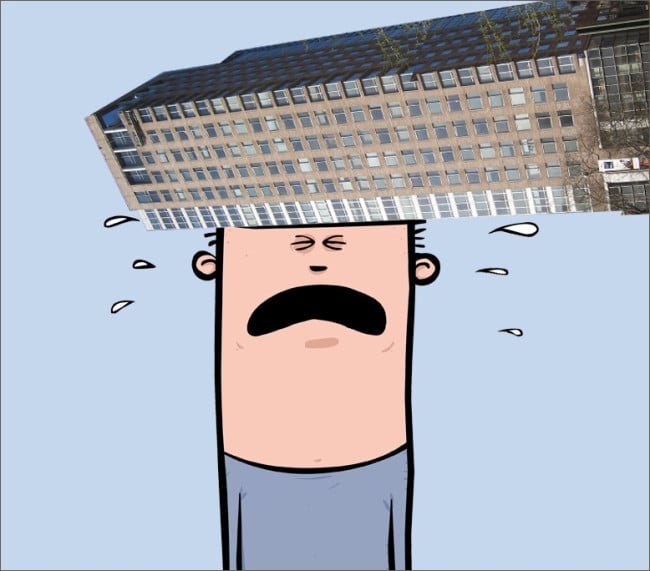How to fix your apartment's sloping wood floors

Help! My hardwood floors are sloping. What can I do?
How you remedy this problem depends on what's causing it, according to our experts.
But before you panic too much about the current state of your floors, realize that most floors in New York City are not perfectly level.
"I don't know any concrete floors are that are completely level," says Jeff Streich, a general contractor with Prime Renovations. "But if you're in an apartment and you put a ball on the floor and it rolls down, you have to level it."
Note that apart from the scenarios that require fixing a building's foundation, most of these fixes entail ripping up the existing flooring first.
Plywood works well for floors in big concrete buildings
In a concrete building, to deal with an issue like this, Streich will sometimes sometimes put down plywood to level out the floor. "The biggest problem is that you have to make sure the front door will open," he says.
Another option: "In rare instances, architects will tell us to use a self-leveling underlayment, which is a concrete. That's very costly to do it throughout the apartment."
Dealing with foundation issues in small and wood-frame buildings
In smaller and wood-frame buildings, "the floors slope because of settling of the foundation of the building," Corcoran broker Deanna Kory says. The effect is ugly, but not dangerous, she says, "so there is no need to worry about that."
If the sloping "is due to the foundations, then you need a foundation repair company and/or engineer," says Fraser Patterson, founder and CEO of Bolster (a Brick Underground sponsor). "If the foundation footer has subsided or sunk, then you need a specialist who will come in and jack up the foundation and fix it, which is not cheap. If it just a sill that has become rotten (the sill is the wooden part that sits on the foundation footer) due to water damage or termites, etc., then you need a general contractor."
Other options for fixing floors
But if neither of those things are the culprit, Patterson says, "you can either do sistering (basically beefing up the joists with additional material until the slope is leveled off), lally columns (only appropriate in homes with basements), bridging (laying new floor on top, which is fairly easy but you lose head height) or mudding (self-leveling underlayment is an easy-to-use, cement-based [product to level] an uneven floor. The material chemically cures to form a very hard surface that will adhere properly to myriad surfaces)."
Spotting foundation problems
"If it is a steep slope then you may be able to see the subsidence from street level," Patterson says. "Cracks in the wall are often a dead giveaway."
If you can't see the source of the problem, call in a general contractor, he says.
Trouble in your NYC apartment. Get your questions answered by an expert! Send us your issues here.
See all Ask an Expert.
You Might Also Like

























